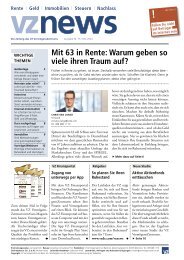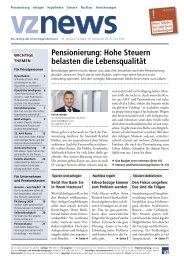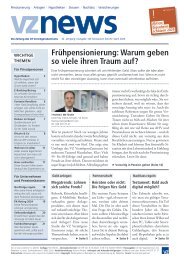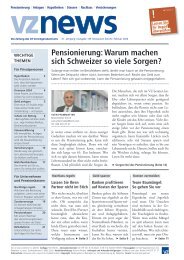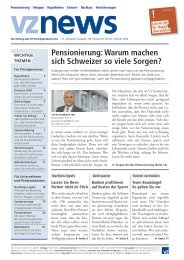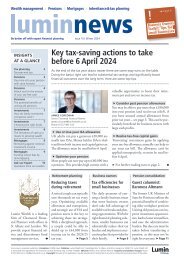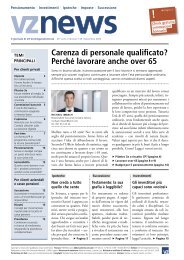lumin news Issue 6 / Autumn 2022
You also want an ePaper? Increase the reach of your titles
YUMPU automatically turns print PDFs into web optimized ePapers that Google loves.
<strong>lumin</strong> <strong>news</strong> 6 / autumn <strong>2022</strong> Page 5<br />
Tax-efficient solutions for high<br />
earners and wealthy individuals<br />
Venture capital trusts and enterprise investment schemes can form a very useful<br />
part of a tax planning strategy for high-net-worth individuals. Here we outline<br />
some of the main tax advantages.<br />
FACTSHEET/WEBINAR<br />
Tax-efficient solutions<br />
for wealthy<br />
individuals<br />
Request a free factsheet or<br />
join our webinar (see page<br />
12). Email info@<strong>lumin</strong>wealth.co.uk,<br />
or call the<br />
team on 03300 564 446<br />
If you’re a high-net-worth<br />
individual and regularly<br />
exhaust your annual pension<br />
and ISA allowances<br />
you may wish to explore<br />
additional tax-efficient investment<br />
solutions as part<br />
of a cohesive investment<br />
plan. Venture capital trusts<br />
(VCTs) and enterprise investment<br />
schemes (EISs)<br />
can be attractive solutions<br />
for those looking to achieve<br />
tax efficiencies.<br />
Venture capital trusts<br />
VCTs provide a number of<br />
tax benefits, including income<br />
tax relief of 30% of the<br />
amount invested, assuming<br />
the VCT shares are held for<br />
at least five years, and tax-free<br />
dividends and capital gains.<br />
Enterprise investment<br />
schemes<br />
EISs also allow you to claim<br />
income tax relief in the year<br />
the investment is made.<br />
There is also a capital gains<br />
tax deferral option, providing<br />
that the investment is<br />
made up to one year before<br />
making the capital gain, or<br />
three years afterwards.<br />
VCT vs. EIS – Simplified comparison<br />
Benefit VCT EIS<br />
For deferral relief, it’s the<br />
gain not the proceeds of sale<br />
that should be invested. In<br />
order for the deferred gain to<br />
be granted a number of criteria<br />
must be met. A deferred<br />
gain is charged at the applicable<br />
CGT rate when sold<br />
after the initial investment<br />
period. There is an option to<br />
defer the gain by reinvesting<br />
Tax-free capital gains Yes Yes, after 3 years<br />
Income tax relief 30% 30%<br />
Minimum holding period<br />
for income tax relief<br />
5 years 3 years<br />
Tax-free dividends Yes No<br />
IHT relief No Yes, after holding<br />
for two years<br />
into a new EIS. If the EIS<br />
shares are held at the point of<br />
death then the deferred gain<br />
will be eliminated.<br />
Key considerations<br />
VCTs and EISs offer unique<br />
opportunities but are complex<br />
and high-risk investments,<br />
so you should ensure<br />
you fully understand them.<br />
An independent financial<br />
adviser can explain the various<br />
implications and risks.<br />
Lumin’s Client Solutions<br />
Committee has<br />
conducted extensive due<br />
diligence to select our VCT<br />
and EIS product solutions<br />
partners. To find out more,<br />
call 03300 564 446.<br />
Reducing inheritance tax liabilities with a gift and loan trust<br />
Gift and loan trusts allow<br />
you to implement a number<br />
of tax-efficient opportunities.<br />
You can retain control<br />
of the original invested capital<br />
and draw an ‘income’<br />
from this investment. This<br />
is a suitable solution for<br />
someone who wants to start<br />
inheritance tax (IHT) planning,<br />
while retaining access<br />
to the original capital. If<br />
the gift and loan trust is set<br />
up in an offshore structure,<br />
such as an investment bond<br />
(see page two for more on<br />
offshore bonds) then investment<br />
growth is deferred,<br />
meaning any investment<br />
income or capital gains can<br />
roll up ‘gross’, and no tax returns<br />
are required each year.<br />
Negating IHT<br />
liabilities<br />
Since a loan is not an outright<br />
gift, the original loan<br />
amount remains within your<br />
estate. However, as the assets<br />
are held in trust, any investment<br />
growth falls outside of<br />
your estate, helping to limit<br />
potential IHT liabilities for<br />
your beneficiaries.<br />
For 20 years, you can withdraw<br />
up to 5% of the original<br />
capital each year with<br />
no immediate tax liability.<br />
Any unused 5% withdrawals<br />
accrue. So, for example,<br />
after a period of three years,<br />
if you haven’t accessed any<br />
capital, you can draw 15%<br />
with no immediate tax<br />
liability. If you draw an<br />
amount that exceeds your<br />
5% withdrawal limit this<br />
will trigger a chargeable<br />
event, and there may be a<br />
tax liability charged to the<br />
settlor within that tax year.<br />
Tax efficiencies<br />
for beneficiaries<br />
When beneficiaries come to<br />
draw from the investment<br />
proceeds they will be taxed<br />
on the overall gain at their<br />
highest marginal rate. However,<br />
beneficiaries are able to<br />
‘top slice’ the gain if it takes<br />
them into a higher rate<br />
band. Top slice relief allows<br />
you to divide the chargeable<br />
gain by the number of<br />
years it has been active, to<br />
keep you within basic rate<br />
(or higher rate) bands for<br />
income tax purposes.





